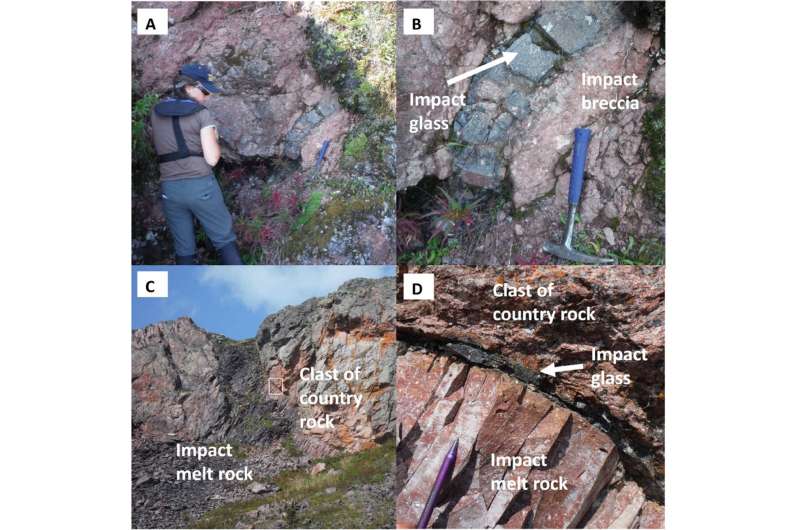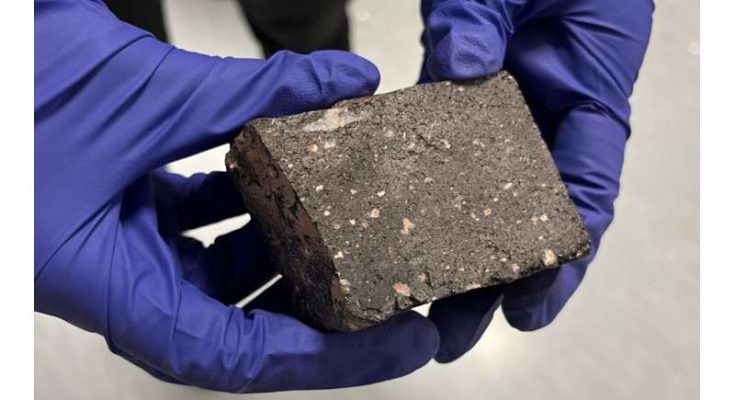For more than a decade, Western University planetary geologist Gordon “Oz” Osinski has led expeditions to Kamestastin Lake in Labrador.
The environment is a perfect training ground because the properties and rock formations—created by the violent impact (and extreme heat) of an asteroid 36 million years ago—uniquely mimic the surface on the moon.
Osinski, Neeraja Chinchalkar, the research technician at Western’s Earth and Planetary Materials Analysis (EPMA) Laboratory, and their collaborators have now discovered new evidence that another meteorite impact once caused equally extreme (and respectively rare) high temperatures, exceeding 2,370°C (4,172°F), at another remote impact structure in northern Quebec.
For the study, published by the journal Earth and Planetary Science Letters, Chinchalkar analyzed glass from rock samples originally collected by Osinski in 2014 at the West Clearwater Lake impact structure in Quebec using an electron microprobe and scanning electron microscope. The analysis found evidence of natural cubic zirconia, a mineral which requires a temperature of at least 2,370°C to form. To put this into perspective, lava flows from volcanoes on Earth range from about 800°C to a maximum of around 1,200°C.
“We looked at the structures present within zircon grains to reconstruct a meteorite impact event from millions of years ago. We found evidence that the target rocks reached extremely high temperatures, which, combined with high pressure conditions, melted and transformed these Earth rocks. It left behind unique space-modified samples that can be studied for years to come and will only further our understanding of the cosmos,” said Chinchalkar.

While previous research has suggested that material melted by meteor collisions can reach such extreme temperatures, direct evidence on Earth has been scarce. In fact, until this new study, such evidence was only found from one meteorite crater: the Kamestastin Lake impact structure.
“Kamestastin Lake contains some of the best-preserved impact melt rocks on Earth, which are some of the highest priority samples that future astronauts to the moon want to find and sample,” said Osinski, an Earth sciences professor. “Now that we have found evidence of these incredible impact melt rocks at West Clearwater Lake, we have a new destination on Earth to bring astronauts, students and geologists, like me, to train and study.”
The West Clearwater Lake rock sample investigation also revealed evidence of reidite, a mineral that forms under extreme pressure exceeding 20 gigapascals, a measurement of the physical force exerted on an object.
“This discovery underscores the variable and dynamic conditions that occur during the process of melt generation caused by meteorite impacts on Earth and beyond,” said Chinchalkar.
Reidite has previously only ever been found at 10 meteorite impact structures on Earth, including Haughton, Nunavut and Steen River, Alberta.
Provided by University of Western Ontario




